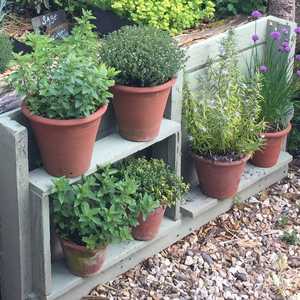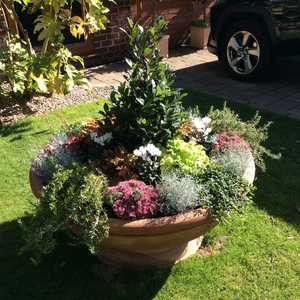How to Start Your Own Terracotta Herb Planter Garden
Mud Mountain Blog

There are a whole host of practical reasons for growing your herbs in pots and planters.
Perhaps bedding space in your garden is limited and you’d like to make room for other plant life or vegetables—or maybe, for logistical purposes, it just makes good sense to keep your rosemary and thyme close at hand for use in the kitchen.
Whatever your reasons, you’ll be pleased to learn that almost all herbs are well-suited for growing in containers and will thrive just about anywhere so long as they’re given adequate sunlight, water, and a dollop of healthy, nutrient-packed soil.
Which container should I choose?
A high-quality handmade terracotta pot is the best option for growing herbs. Not only are they a stunning garden feature, rich with traditional Tuscan aesthetics, they’re also not prone to dry out as quickly as their plastic or metal alternatives. They're also perfect for mixed herb planting arrangements and make for great underplanting for large trees.
What’s more, when you choose a larger variety of terracotta planter, you can fill them liberally with soil. This will provide your herbs with enough moisture during the warmer months and will offer insulation for their roots in cold temperatures.
As with all terracotta containers, it’s vital to allow good drainage and protect the pot's bottom from soil moisture. Our advice is to use pot feet for the flatter-based planters, or terracotta stands for the larger Ciotola-style pots….for that extra protection and peace of mind.
Size matters!
Left to their own devices, some herbs will grow to a considerable size, and it’s important to find a suitably large container to accommodate your free-flowing plant life. Rosemary, for example, once established can eventually grow to around 4 feet in diameter. An extra-large terracotta pot is a brilliant solution for this kind of herb and will offer the dimensions and freedom to grow your herb requires.
Before adding soil to your preferred container, you’ll need to provide a layer of rocks or gravel to the bottom quarter of the pot to help with the drainage process. Also, be sure to use a good quality potting soil mix, filled to within 2 inches of the top of your planter, allowing plenty of room for watering.


Prolonging the life of your herbs
By extracting certain herbs from the ground in early autumn, you can prolong their life cycle and have fresh herbs growing near your window all throughout the winter. Parsley, coriander, and chives all work well when they’re dug up and relocated. These strong-growing plants can be divided, replanted into small terracotta pots, and kept in a sunny spot close to your house for easy access.
What to do with invasive herbs
Invasive herbs are much easier to maintain when kept in containers or pots. Indeed, planting mint in your garden will certainly offer plenty in the way of harvest, but will quickly turn into a nuisance if you’re not on top of things. Kept in decorative terracotta jars or urns, exposed to plenty of sunlight, you can keep a beady eye out for runners and clip them back where necessary.
How can we help?
Growing herbs in containers can be a rewarding experience and the benefits are numerous. A good place to start with your easy-to-manage herb garden is to find the best terracotta pot in order for the edible, aromatic plant life to flourish. If you’d like any guidance in finding the perfect-sized pot for your needs, please don’t hesitate to get in touch.
